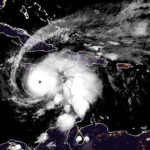Social inflation is increasing at a precipitous rate and resulting in unanticipated costs and risks for insurers. It has pushed up the cost of insurance claims at such a speed and extent that pricing no longer accurately reflects risk.
Executive Summary
Social inflation is the rise in insurance claims costs over economic inflation, and Paul Mang, chief innovation officer at Guidewire, writes that it is creating unanticipated claims costs and risks for insurers so that pricing no longer accurately reflects risk. In this article, he discusses the main drivers of social inflation and what insurers need to do to mitigate this growing challenge.If this persists, it could ultimately impact the capacity and even availability of whole lines of business insurance. Yet, for all the talk about it, very little is being done. Insurers know social inflation is a problem, but they are struggling to measure it and come up with a concrete response.
Social inflation is the rise in insurance claims costs over and above economic inflation. It is fueled by shifts in societal views toward litigation and results in plaintiff-friendly legal decisions.
There are two primary drivers of social inflation. The first is rooted in societal shifts that stem back to the 2008 financial crisis, which has contributed to a tendency among juries to sympathize with plaintiffs’ framing of the issues in a trial versus a corporation.
In addition, law firms and the third parties they engage are deploying sophisticated tactics to monetize societal trends for higher payouts, according to Guidewire’s research. For example, some legal entities are investing in powerful data, analytics and technology to identify and exploit liability opportunities. They are also increasing advertising and social media spending, funding legal services for potential plaintiffs, and adopting psychologists and behavioral science to influence juries.
The level of compensation awarded in cases has also increased, particularly in large cases. Verisk reported that over the last 10 years, there has been a rise in nuclear verdicts, or jury awards that surpass $10 million. The data analytics provider reported that in 2019 alone, there was a 300 percent increase in verdicts of $20 million or more when compared to the average from 2001 to 2010 (citing information from a Dec. 27, 2019 Wall Street Journal report of cases reported to VerdictSearch, “The Specter of Social Inflation Haunts Insurers“).
Insurers need to always adjudicate claims fairly and efficiently; however, the pernicious nature of social inflation threatens the industry’s ability to serve insureds sustainably over the long term. As an industry, insurers are masters in understanding most claims trends, but when it comes to broad litigation-related trends, they often rely on meager data and guesswork.
This gulf between insurance and legal entities must be proactively addressed. Insurers need to become well versed in social and legal trends, just as they are in other types of claims trends. Societal shifts need to be respected and managed sensitively. But losing the analytics arms race against the legal system only serves to undermine a healthy functioning insurance market.
The application of advanced data and analytics in the insurance industry can make a difference.
By analyzing claims and policy experience together with behavioral data, insurers can build a detailed understanding of the link between behavioral indicators and liability management factors. In doing so, they can build predictive models that can measure levels of social inflation and price risk appropriately.
Liability insurance exists to protect businesses and individuals from legal risks. Leaving social inflation unchecked harms the sustainability of the insurance industry, which in turn hurts businesses and our communities overall. Insurers must begin engaging more to combat social inflation, and a significant advantage may lie in applying non-traditional data and advanced risk models.





















 Global Warming Likely to Push Future Hurricane Seasons to Extremes: Study
Global Warming Likely to Push Future Hurricane Seasons to Extremes: Study  ‘Dream Is in Sight:’ Chamber, Reinsurers, Insurers Urge Florida to Stay the Course
‘Dream Is in Sight:’ Chamber, Reinsurers, Insurers Urge Florida to Stay the Course  Demystifying the Data Landscape: Lake, Warehouse and Lakehouse Explained
Demystifying the Data Landscape: Lake, Warehouse and Lakehouse Explained  Chubb, The Hartford, Liberty and Travelers Team Up on Surety Tech Co. Launch
Chubb, The Hartford, Liberty and Travelers Team Up on Surety Tech Co. Launch 

